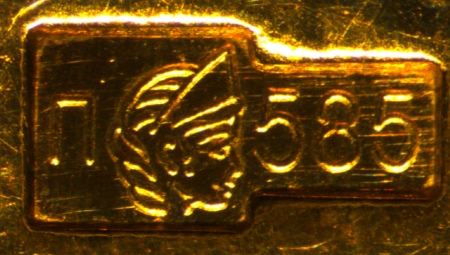Stigma on Gold - an integral part of the product, which demonstrates that the decoration is real. Each buyer should know what a real brand looks like, where it should be located and how to distinguish a real jewelry from a fake.
What it is?
The mark on gold is a special state sign that acts as a confirmation of the test on the product. Each jewelry item made of precious metal must go through testing and branding without fail. With the help of this sign, the consumer will be able to understand from which alloy the selected jewelry is made, by whom it is made and when.
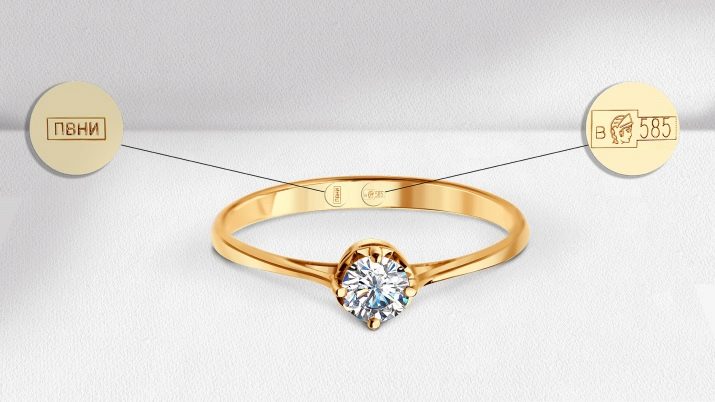
Branding is a mandatory procedure in almost every state. On the territory of Russia, the State Assay Chamber under the control of the Federal Assay Supervision is responsible for this action. The fingerprint is produced in accordance with a single model, which is approved by state authorities. Branding is allowed only after the product has been verified for testing.
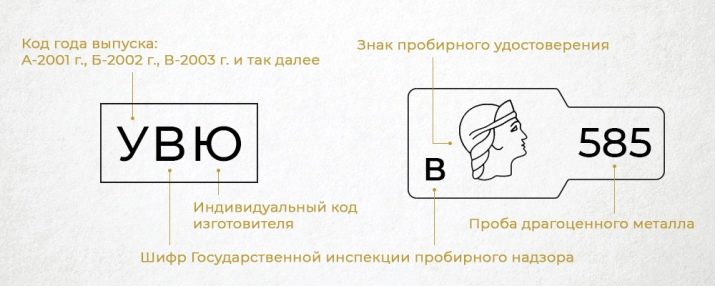
In other words, state sign acts as a guarantor of the quality of the alloy sold. The buyer, seeing the stigma, will be sure that the jewelry has already been checked by specialists and meets the declared characteristics. There are several rules in the jewelry industry according to which branding is applied. According to accepted standards, the mark should not spoil the decoration, so it is placed in strictly defined places.
- On the inconspicuous part of the product. In the rings - this is the back side, on the clasp, carbines of other jewelry. The pendants on the holders are branded.
- Several parts of the same product will be tested separately.
- If we are talking about interior items, on products with artistic value, there must be an additional plate made of a similar alloy. It is stamped.
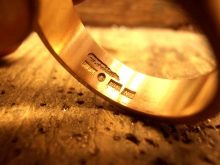
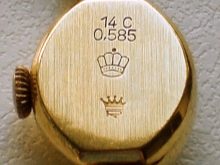
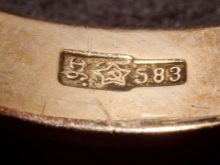

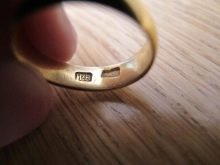
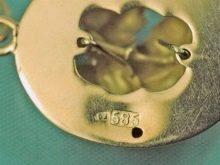
History
Assay supervision appeared in Russia in the 17th century. Jewelry was branded and tested in Moscow, in the Silver Row. At that time, that place was the only one where it was possible to legally engage in the sale of precious metals. Currently, not only jewelry is branded, but also other accessories made of precious metal. A technical examination is also carried out in the assay chamber, along with control analyzes of alloys and precious stones.


For the first time, the mark on jewelry was fixed in the year 1651-1652. It was depicted an eagle with two heads, next to which was the date of production. Initially, the marks of alloy quality were not present on the mark, but similar prints were placed only on jewelry with a breakdown above the 83rd. Imported coins were often branded with a similar sign, which were later melted into jewelry.
Spool system in Tsarist Russia took place until they introduced the modern. A similar system was built on the Russian pound, which weighed 0.4 kg and contained 96 spools. Therefore, a product made of pure gold was given 96 breakdowns.
Accordingly, the 48th sample contains only half the precious metal.
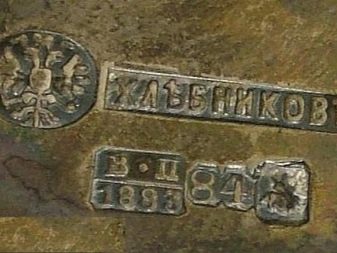
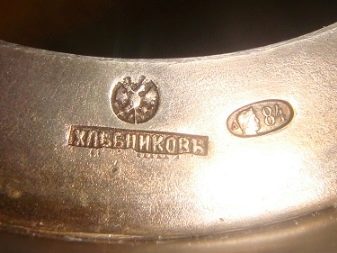
What are they?
The stigma of different countries may vary, because each state creates its own sketch. For example, in Belarus, a bison is applied to display genuine precious metal. The following types of state signs were used on Russian gold.
- "Tee". Such a mark was put before 1896, it looked like a tee, on which the numbers intersected with the breakdown, year of issue, coat of arms and the first letter of the name of the inspector. Until 1897, the sign had convex forms. Subsequently, they began to make it pressed.
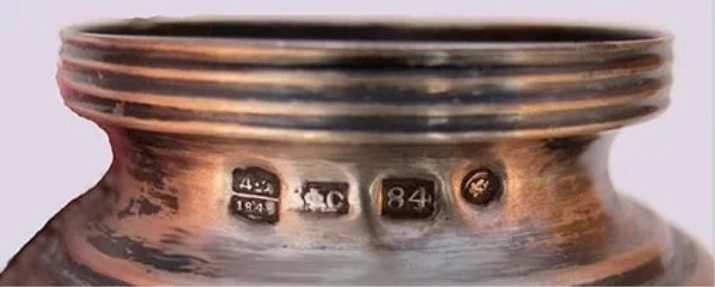
- In 1899, a new sign appeared that looked like girl in a kokoshnik in profile on the left side.
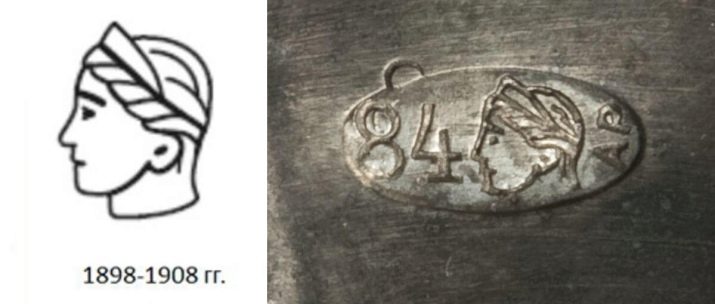
- From 1908 to 1927 in Russia began to brand jewelry with impression of a girl in a kokoshnik, but in a profile on the right. The sign was accompanied by a Greek letter. It was changed depending on the city.
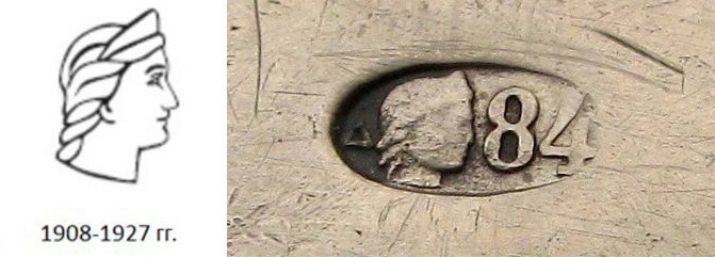
- In 1927, the USSR began to affix the head of a worker with a hammer.
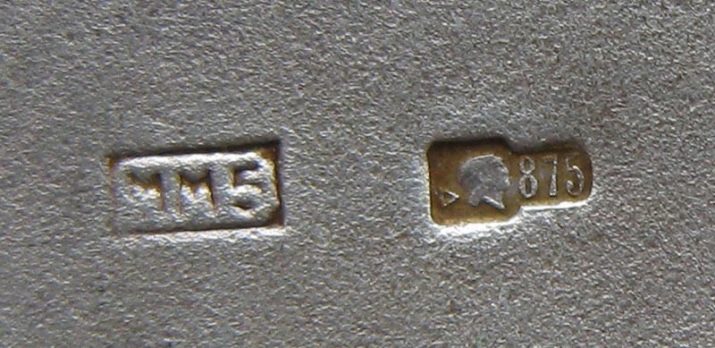
- In 1958, they began to bet on Soviet gold brand that was called the quality mark in the USSR. It looked like a five-pointed star with a sickle and hammer inside. Such a sign was placed only on jewelry.
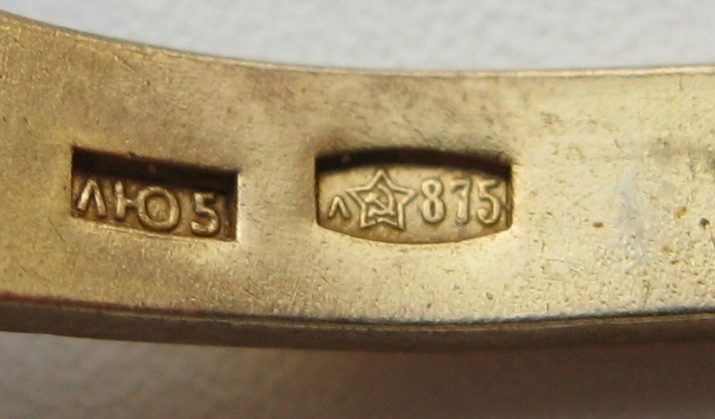
Already modern jewelry made of precious metals equips female head in kokoshnik with profile. In the lower right corner put the letter-cipher of the state inspection from assay supervision. In the jewelry industry, several testing systems are used. Using such a measurement, one can understand what concentration of gold is contained in the unit of alloy.
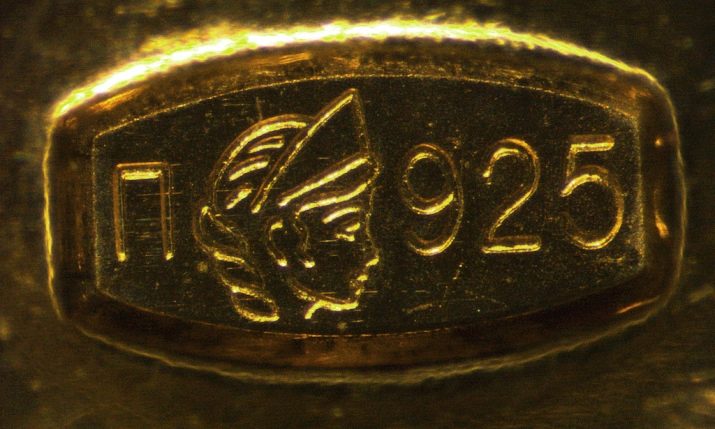
Karatnaya
Such a system use foreign masters from European countries and the USA. The sample is put in carats and demonstrates how many fractions of pure precious metal are located in 24 parts of the alloy.
Metric
The most common option. It is relevant for many countries of the world, as well as for Russia. It is used in Austria, Great Britain, Hungary, Denmark, Latvia, Sweden and in other countries.
Zolotnikova
Used in the Russian Empire, after which it was in demand in the Soviet Union. At this moment not applicable. The decoding is as follows: it shows how many units of gold are in 96 parts of the alloy.

Lot
Such a system It was used in the Middle Ages by the Western European people: Celts, Germans and Scandinavians. In those days, most of the precious metals were measured by brands, which consisted of 16 lots. The sample demonstrates how many lots of precious metals are contained in one brand.
On products, in addition to the stigma, a gold sample is necessarily indicated.
- 375 standart Is the cheapest alloy. It contains only 37.5% of the precious metal, and the rest of the composition is silver with copper. The color of the decoration will depend on how much metal prevails in it.
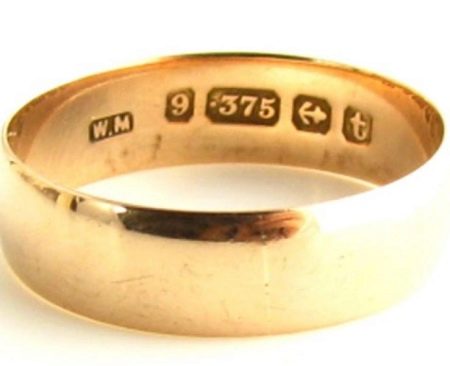
- 385 standart often used to create jewelry in Russia. The concentration of gold is 58.5%. The rest is silver in an amount of 33.5% and copper. The alloy is durable, yellow and reddish.
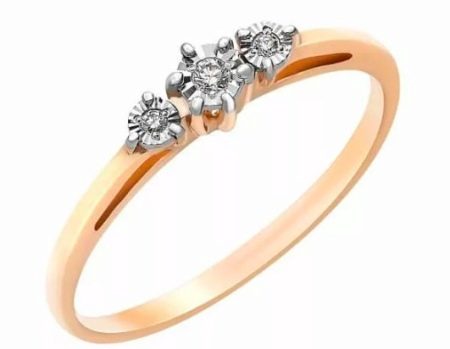
- Now popular is white 14k goldin which palladium with nickel is present.
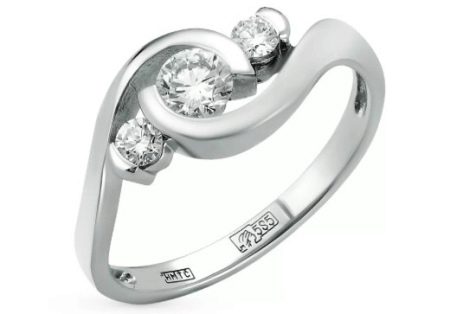
- Jewelry 750 - This is the most expensive and high-quality category. From such an alloy, it is possible to make products with jewelry accuracy, due to the flexibility in processing. The concentration of gold in such an alloy is 75%.
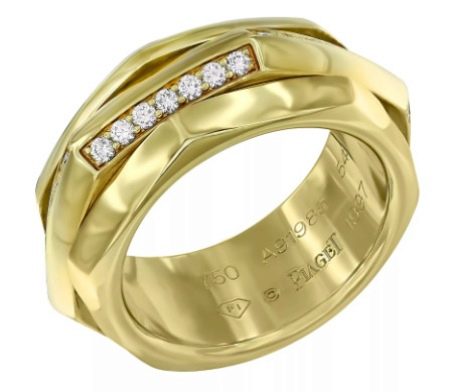
- 999 standart - This is pure gold. Products will have the highest price. Differs in bright color and fragility. Such raw materials are used in the manufacture of ingots.

Some companies, such as Faberge, applied to their products personal stigmas. There are several variations of prints. Items can be with the letters “K” or “KF”, on some products “FABERGE” or “K FABERGE” is placed.
For European consumers or London affiliates, the Faberge brand was affixed.
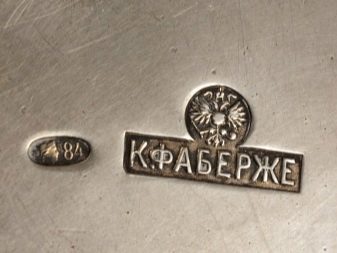
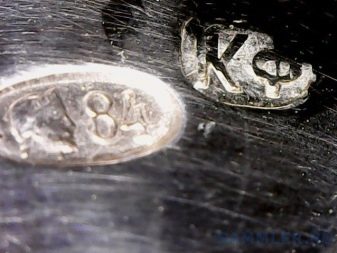
Application Methods
The type of application may vary based on the following features of the product:
- complexity of work;
- features of the arrangement of stones (if any);
- appearance;
- design.

The following methods exist.
Mechanical
It is considered a crude method that is based on branding by physical pressure. It will require the use of a vice in which the product is fixed, as well as jackhammers. The method is considered old, it was resorted to in the XVII century.
Advantage of mechanical application lies in the good quality of the sign: it will not be erased after some time and does not harm the decoration. Using this method, the mark is applied to 80% of the product.
At the moment, the sign can be affixed automatically, due to which scratches and deformations are eliminated.
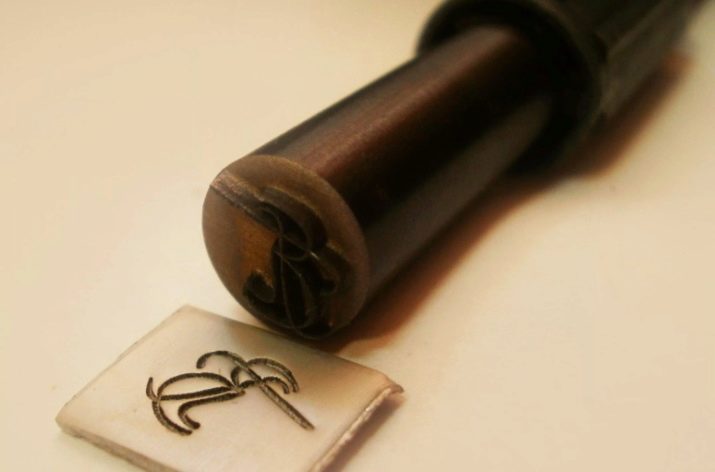
Electrospark
Allow to apply a stamp more thinly. Due to which a drawing with text is applied accurately by burning. Can be used even on fragile or very small jewelry. Is applied since 1967.

Laser
Involved in the work laser installations. The engraving is small and almost imperceptible. The stigma is characterized by durability and endurance. However, it should be noted immediately the low productivity of this method. A laser cannot brand more than 600 products. Among the advantages, the flexibility of this method is noted: the mark is applied to either side of the decoration.
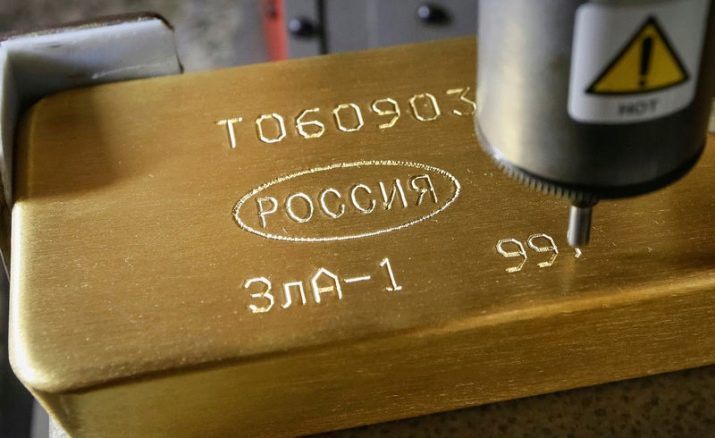
Name specificity
The nameplate must accompany the stigma and consists of the following information:
- individual manufacturer code;
- year of release in letter form;
- cipher of the state inspection of the assay service, which contains the initials of the manufacturer.
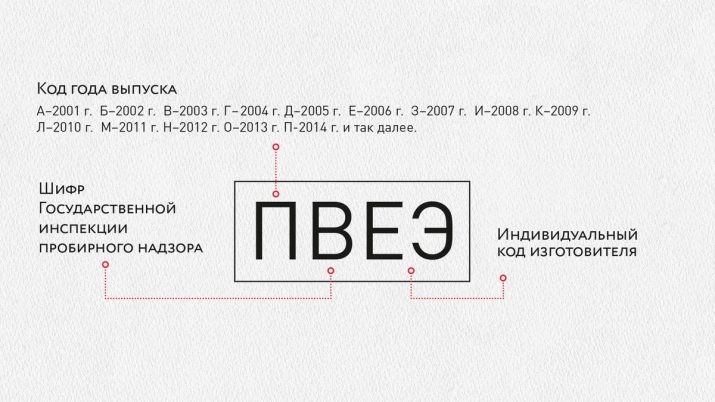
The nameplate itself is located in a rectangular frame, which is located near the stigma. Knowing what this abbreviation contains, you can easily decode product data.
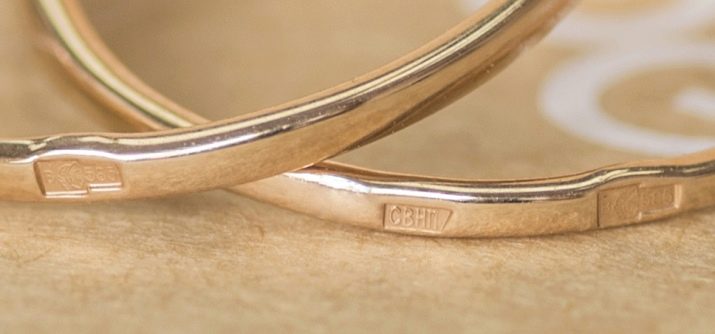
How to distinguish a fake?
Previously, the stigma was put down manually, so it was quite difficult to buy a fake. Any jeweler could immediately see if the real item was in front of him or not. To date stigma cases are commonTherefore, every buyer should know how to distinguish an original from a fake.
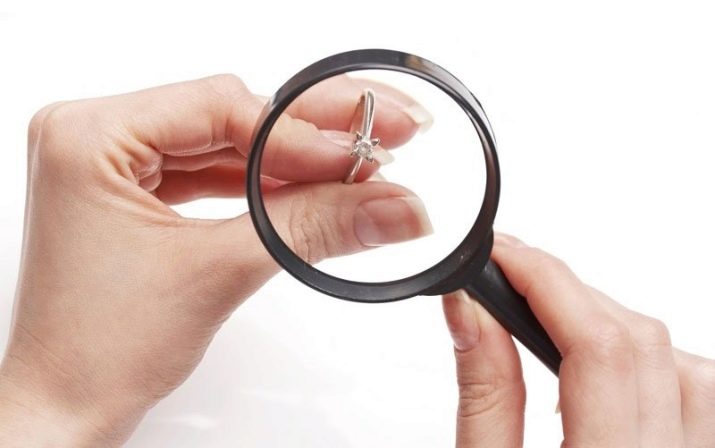
In order to study the brand on the product, you should use a magnifier that has a large share of magnification. In advance, it is recommended to rinse thoroughly in order to remove dirt from the hollows of the sign. Fake brands are similar to the real ones only externally, at the initial visual inspection. But if you look at the details, you can immediately notice inconsistencies.
- The sample should be clear and even. If there are uneven figures, this indicates that there is a fake in the hands.But the unevenness does not always indicate the unreliability of the sample, because some signs are applied manually. Although this phenomenon is considered an exception.
- Appearance of the stigma. Gold must have a mark that meets the declared standards. For example, for a Russian product in the central part there should be a girl in a kokoshnik, on the right side the numbers with a breakdown are applied, and on the left - the letters of the inspection, which affixed control.
- On imported products the sample is indicated in carats, and the Sign of the Assay Chamber is affixed next to the home brand.
How to distinguish a fake from the original gold jewelry - a few useful tips in the video below.
